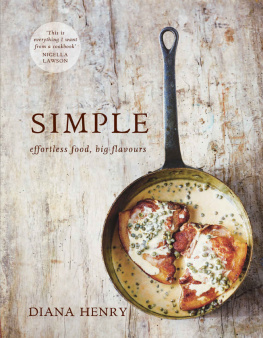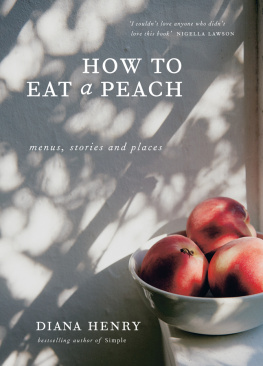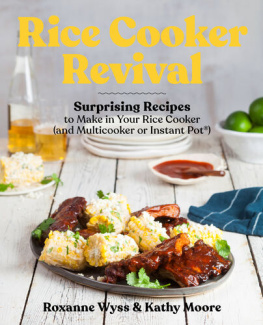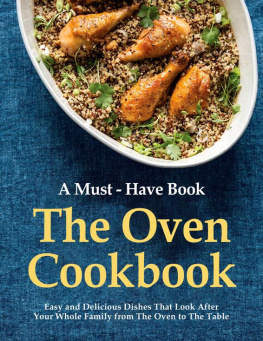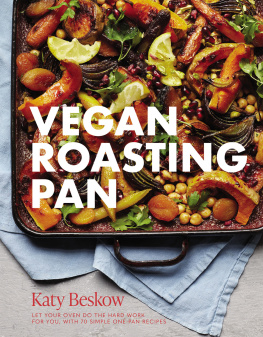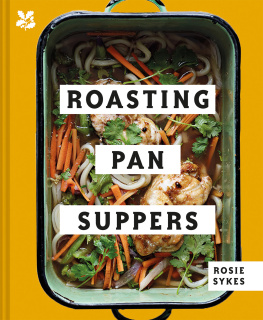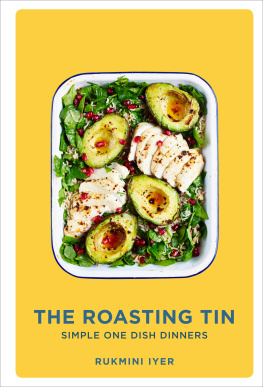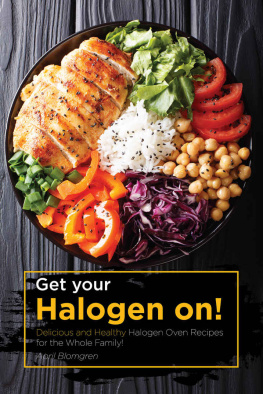Contents
Guide



CONTENTS
SIMPLE SUPPERS
sausages, chops, fish fillets & the like
MY FAVOURITE INGREDIENT
chicken thighs forever
ASPARAGUS TO AUBERGINES
spring & summer vegetables
BEETROOT & BITTER LEAVES
autumn & winter vegetables
COOK UNTIL TENDER
grains & pulses
WEEKENDS, HIGH DAYS & HOLIDAYS
joints, birds & whole fish
SOMETHING SWEET
puddings & cake

HOW TO USE THIS EBOOK
Select one of the chapters from the and you will be taken straight to that chapter.
Alternatively, jump to the to browse recipes by ingredient.
Look out for linked text (which is blue) throughout the ebook that you can select to help you navigate between related sections.
You can double tap images to increase their size. To return to the original view, just tap the cross in the top left-hand corner of the screen.
INTRODUCTION
Closing the oven door and swinging a tea towel over my shoulder is one of the most satisfying movements I make in the kitchen. I love the alchemy that takes place behind that door. Its astonishing how heat, on its own without you directing it or supervising it very much can turn simple ingredients into a meal.
Because I love cooking, Im happy to make complicated food; I know that some dishes can only be achieved by browning the constituent elements and slowly building layers of flavour. There will never come a time when I dont want to cook and eat boeuf bourgignon, a dish that needs this kind of attention. But I cant cook food like this from Monday to Thursday, I just dont have the time. If youre a bung-it-in-the-oven kind of cook, whether by necessity or desire, then this book is for you.
The dish that introduced me to this laidback oven-loving approach was an Antonio Carluccio recipe for chicken thighs cooked with little potatoes, red onion wedges, garlic, rosemary and olive oil. When I discovered it its in his book An Invitation to Italian Cooking I silently mouthed the word genius and knew that I had stumbled across something life-changing. For that dish, you dont brown anything, you just put the ingredients in a roasting tin, season them, put them in the oven and wait for 45 minutes. Then you eat. Its still the meal I have cooked more than any other over the last 20 years.
In that time, Ive built up a repertoire of dishes on this theme, some with a layer of stock poured underneath the meat; as the dish cooks the top becomes golden and a sauce develops below. I worked out how to apply this approach to rice instead of potatoes, the stock reducing and being absorbed as the grains cook to tenderness. I roast foods that are more usually done in a pan on the hob sausages, broccoli and salmon fillets just because I think its easier. It is literally hands off cooking.
Why is it important, when I know that cooking does take effort, to offer you dishes that, while requiring attention, are relatively easy to achieve? Because I believe that the table is important. I wouldnt have managed to feed my children well and share food with friends (on a Wednesday as well as on a Saturday night) without finding simple ways to do things. The dishes that follow from homely sausages baked with tomatoes, potatoes and pecorino cheese to a celebratory dish of sea bass with a Middle Eastern stuffing have helped.
Because I roast and bake so much, Ive amassed loads of roasting tins, baking sheets, gratin dishes and two broad shallow casseroles (though, truthfully, you only need one).
Im not the only person who likes this kind of cooking. There are scores of American books devoted to sheet pan cooking. Were not so familiar with sheet pans in the UK, but theyre a great invention: heavy-gauge baking sheets with a lip around them. If you have sheet pans, you can use them instead of roasting tins or trays for many of the dishes in this book. You dont need lots of new equipment to cook the food that follows, but its a good idea to read the section on kit.
In the UK, people have started to call these dishes cooked in roasting tins or oven trays tray bakes, a term I just cant use, because, when I was growing up, tray bakes were exclusively sweet. Millionaires shortbread, lemon bars, those squares made with cornflakes and golden syrup these were tray bakes, so you wont find the term used here.
Many of the recipes that follow are for one-pot meals, but not all of them. When I have been able to incorporate a starch, I have. With some, I just wanted to give you a basic roast. With others, I felt that an accompanying grain, bread or salad was what you needed. There are no pasta dishes baked from raw in a roasting tin, as I hate the texture that produces. Pasta like bulgur wheat is actually easier to make on the hob, anyway.
So that you dont have to consult other books when cooking out of this one, Ive included a section on how to cook various grains, and a section on how to cook potatoes and sweet potatoes in the oven in lots of different ways alongside whatever else you are roasting.
Where the dishes are one-pot, they vary in terms of effort. The most basic really do just require you to chuck ingredients in a pan, season them and roast them. At the other end of the scale as in a smoked fish, tomato and potato gratin, for example you have to slice potatoes thinly and heat cream and milk before pouring it into the gratin dish. Some recipes are for fairly plain roasts that are made more special by a relish or a salsa on the side. You can choose whether to make the relish or not (I have suggested simpler accompaniments that you can buy), and there is also a collection of relish recipes that only require you to mix or chop, so you can ring the changes.
To cook this way using very simple methods you do need a well-stocked cupboard. Youre not doing much to the food youre cooking, so you need big flavours. There are ingredients pomegranate molasses, miso, preserved lemons that you need to get. A lot of unusual foods that werent available even five years ago are now sold in supermarkets, but if you dont have a good one near you, everything can be ordered online. I grew up in a small town where many things were impossible to buy. I wish wed had the access to ingredients we do now. Delivery costs are an issue, but put together a list of things you need and then order them together, so you only have one delivery fee.
You dont just roast in the oven, of course, you also pot-roast, bake and do what Americans call wet roast and Ive written more about these later in the book. (Theres not much science, just enough to help.) I do love what the application of dry heat proper roasting does to food, though, the way it caramelizes the surface of meat and the edges of vegetables. This heat can even help a batch of under-ripe and woolly apricots: roasted with a light dusting of sugar, the heat intensifies everything that is hidden when theyre raw, it finds their sweetness, chars spots on their flesh, makes them tender and mouth-puckeringly tart.


